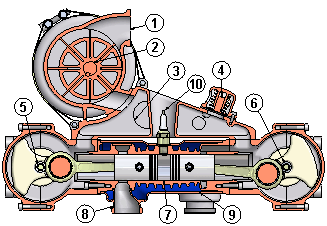Rotary10-RV
Well Known Member
Group,
Another entry on the opposed piston diesel front. With claims of "new" and "revolutionary" Powerplant Developments of merry olde UK has reinvented the opposed piston diesel. I love this style engine, it's one of the most efficient configurations. The idea isn't new though. They claim 100 HP at a weight of 166 pounds, or 11.9 stone. Not too bad. The guys at DAIR might be a bit upset about the "new" claims. PPD uses a 3 cylinder (6 piston) layout. All complaints about their new and improved claims aside, the engine does bare watching.
Bill Jepson
Another entry on the opposed piston diesel front. With claims of "new" and "revolutionary" Powerplant Developments of merry olde UK has reinvented the opposed piston diesel. I love this style engine, it's one of the most efficient configurations. The idea isn't new though. They claim 100 HP at a weight of 166 pounds, or 11.9 stone. Not too bad. The guys at DAIR might be a bit upset about the "new" claims. PPD uses a 3 cylinder (6 piston) layout. All complaints about their new and improved claims aside, the engine does bare watching.
Bill Jepson





